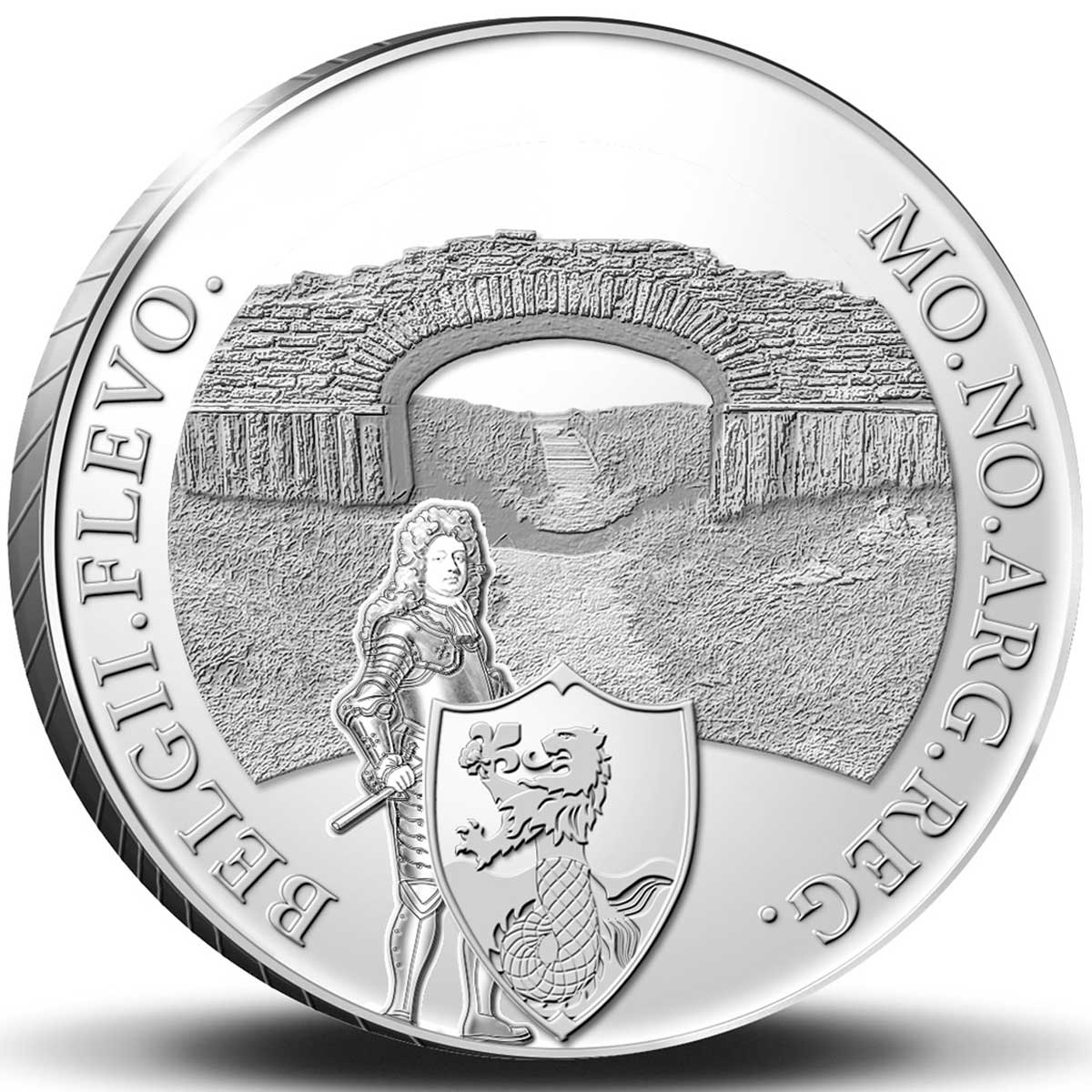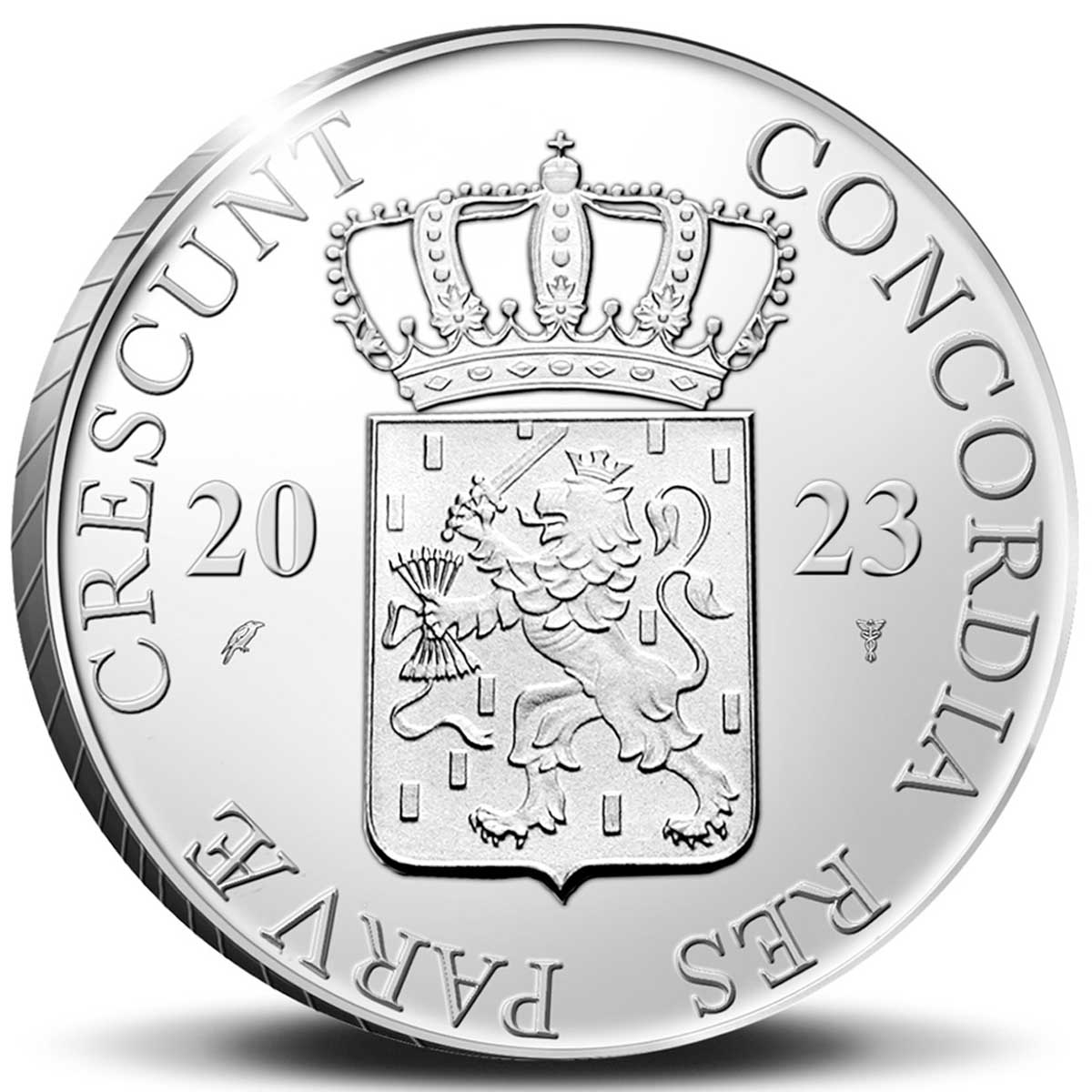
Dutch Castles: Kuinderburcht Bridge Silver Ducat (2023 Royal Dutch Mint)

It was in 1586 the Ducat coin in the Netherlands had its debut, followed in 1659 with a silver version. The Royal Dutch Mint has produced many coins inspired by the original, including the ‘Twelve Provinces’ series, that ran from 2015 to 2019, and in 2020, following that with ‘Dutch Castles’. What we’re looking at here, is the twelfth and final issue in that series.
Called Kuinderburcht Bridge, it’s the only one of the twelve not to depict an actual castle or stronghold. The bridge did, however, exist as part of one, the foundations of which were exposed during land reclamation works in 1942. The first castle on the site was built in the late 12th century, while a second one was built in the late 14th century after the first one was abandoned.
This has been a neat series, each issue depicting a provincial stronghold, in front of which is the required (to be a Ducat) armoured knight. All twelve coins depict Godard de Ginkell, rocking a world-class mullet, but the shield in front of him carries the coat-of-arms of the province specific to the coin, in this example, Flevoland. The obverse is a common one we’ve seen for years, but a good-looking one regardless. Presented in a themed tin with a COA, it has a mintage of 2,000 units. We’ll do a companion profile to the series soon.

MINTS DESCRIPTION: Just over the border of the youngest province in the Netherlands, Flevoland, is a bridge. And it’s not just a bridge. There are sources from the 12th century that speak about a bridge, the stronghold in Kuinre. In the 15th and 16th century, the area around the stronghold is referred to as “canals, a bridge, several living quarters, a gate, outbuildings and various defenses”. During a big investigation in the 40’s of the 20th century, the foundations of a stronghold are found. This stronghold was the home of many different lords, known as the Lords of Kuinre. One of the first known residents of Kuinderburcht was Hendrik the Crane, a lord that executed raids in Friesland, resulting in various conflicts.
The Kuinderburcht Bridge was mostly known for the swampy ground in the area. That is why the lords manly lived from hunting and fishing. The hunting area got significantly smaller during the years, which caused the lords to shift their attention to levy toll on shipping on the Zuiderzee (the southern sea). The lords of Kuinre then proceed to control several trading routes that would go through the rivers Kuinder, de Vecht and de IJssel. Since 2020, many spots in the area of the bridge have special transparent panels with drawings on them. This makes it possible for people to see an object or happening that took place in the past and is no longer visible.
| DENOMINATION | COMPOSITION | DIAMETER | FINISH | MINTAGE |
| Undenominated | 28.25 g of 0.873 silver | 38.6 mm | Proof | 2,000 |


Leave A Comment